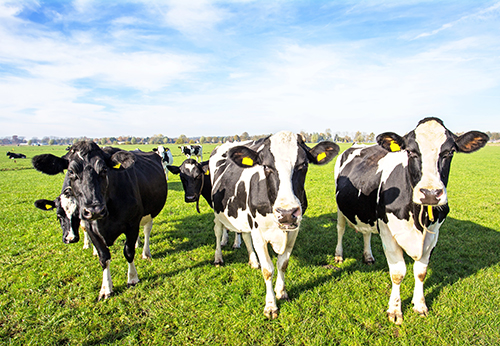
We present all of our dairy accounts in pence per litre format. One of our common conclusions with regards to overheads is that we need more litres to dilute the overheads across. It could be argued that increasing the cow numbers is the best way around this, however most commonly our advice is to try and get more litres from the existing herd.
For dairy farms, the feed margin is the most fundamental contributor to profit. With feed prices on the rise, it is more important than ever to maximise yield from forage.
Assumptions:
- 10,000 litre herd
- Litres per day (305 days in milk) – 32.79 litres
- All year round calving therefore assumed constant milk throughout the year
- 4kg concentrates/litre
- Milk income 30p/litre
|
|
Difference |
|||
|
Litres from forage |
Per year |
3,000 |
2,000 |
1,000 |
|
|
Per day |
9.84 |
6.56 |
3.28 |
|
Litres therefore from concentrates |
Per year |
7,000 |
8,000 |
1,000 |
|
Per day |
22.95 |
26.23 |
3.28 |
|
|
Concentrates used (kg) |
Per day |
9.18 |
10.49 |
1.31 |
|
Per year |
3,351 |
3,829 |
478 |
|
|
Concentrate cost |
@ £260/t |
£871 |
£996 |
£125 |
|
MOPF per cow |
|
£2,129 |
£2,004 |
£125 |
|
MOPF per litre |
|
21.29p |
20.04p |
1.25p |
In addition to concentrate prices being on the rise, we are noticing that dairy farmers are spending an increasing amount with contractors. The cost of silaging is the same, regardless of quality. It is therefore crucial to make the best quality silage and optimise the use of this silage. Once the silage is in the pit, maximising feed intake is key to achieving the best yields from forage. 3,000 litres from forage is a good target for a high yielding herd, however a 5,000 litre spring calver should be capable of more than 3,000 litres from forage.
Kathy Harris
More News